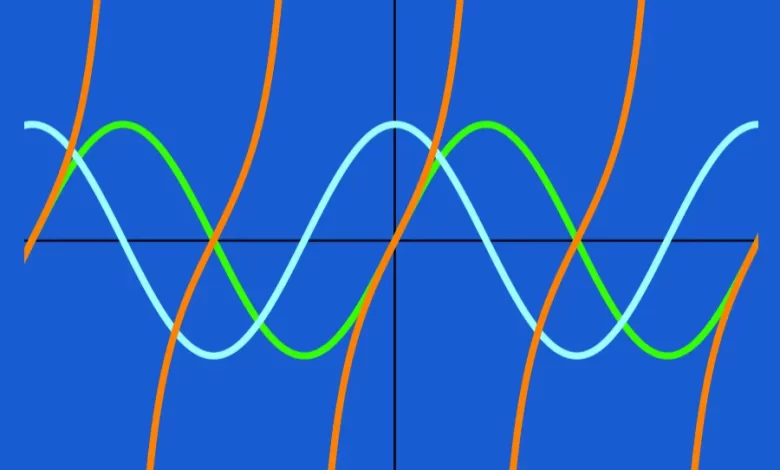Trigonometric Functions

What do you understand by the word Trigonometric Functions? In your school days, you would have probably first learned about sines, cosines, and tangents when you were studying triangles. Trigonometric functions are amazingly useful in an enormous variety of contexts. Though these functions are so handy that scientists and mathematicians always keep them in mind as part of their standard toolbox. We have been using sines and cosines whenever we see anything that varies in a smooth wave cycle going up and down by the same amount again and again regularly.
In mathematics, there are six functions (sine, cosine, tangent, cotangent, secant, and cosecant) that represent ratios of sides of a right triangle.
Applications of Trigonometry
Trigonometry is the branch of mathematics that deals with the relationship of sides with angles in a triangle. With trigonometry finding out the heights of big mountains or towers is possible, also in astronomy, it is used to find the distance between stars or planets and is widely used in physics, architecture, and GPS navigation systems. Trigonometry is based on the principle that “If two triangles have the same set of angles then their sides are in the same ratio”. Side length can be different but side ratios are the same.
Trigonometric Functions
- sin A = Perpendicular / Hypotenuse
- cos A = Base / Hypotenuse
- tan A = Perpendicular / Base
- cot A = Base / Perpendicular
- sec A = Hypotenuse / Base
- cosec A = Hypotenuse / Perpendicular
Applications of Trigonometry
Trigonometry has a massive application in calculating distances, finding paths in motion, and studying waves.
Some are discussed below:
Trigonometry is used in measuring the heights of mountains, towers and
buildings:
The height of the mountains and tall towers can easily be found using trigonometry. You can also find the height of a tower by measuring the horizontal distance from the base of the tower and finding the angle of elevation to the top of the tower using a sextant and then you can easily find the height of the tower, mountain, or any other thing.
Trigonometry used in construction sites:
In a construction site trigonometry are used to calculate:
- Measuring grounds lots and fields
- Measuring ground surfaces
- Making building perpendicular and parallel
- Roof inclination and roof slopes
- Installing ceramic tiles and stones
- The height and width of the building
- Light angles and sun shading
Trigonometry in physics and mathematics:
Trigonometry is also used in physics and mathematics. It is also used in vector algebra, finding components of a vector, cross product, calculus, waves, oscillations, circular motions, and optics.
Trigonometry in the satellite navigation system:
A satellite navigation system provides you with your location on the map with the help of 24 satellites in an earth orbit. The calculation involved in trigonometry is also used especially in the law of cosine and it makes the calculations simple.
Trigonometry is even used in Astronomy, Navigation systems, Surveying, Architecture, CT scans, Ultrasounds, Number theory, Oceanography, Computer Graphics, and In-game development.
Chain Rule
The chain rule is a method of finding the derivative of composite functions or functions that are made by combining one or more functions.
To differentiate a composite function there is only one way and that is by using the chain rule. If we can’t recognize that the function is a composite and the chain rule must be applied to it. On the other hand, applying the chain rule on a function that isn’t composite will also result in a wrong derivative. Especially with transcendental functions that are trigonometric and logarithmic.
Applications of Chain Rule
The Chain Rule can also help us to deduce the rates of change in the real world. The Chain Rule will show variables like time, speed, distance, volume, and weight are interrelated.
To know more, visit Cuemath to book a free session.





